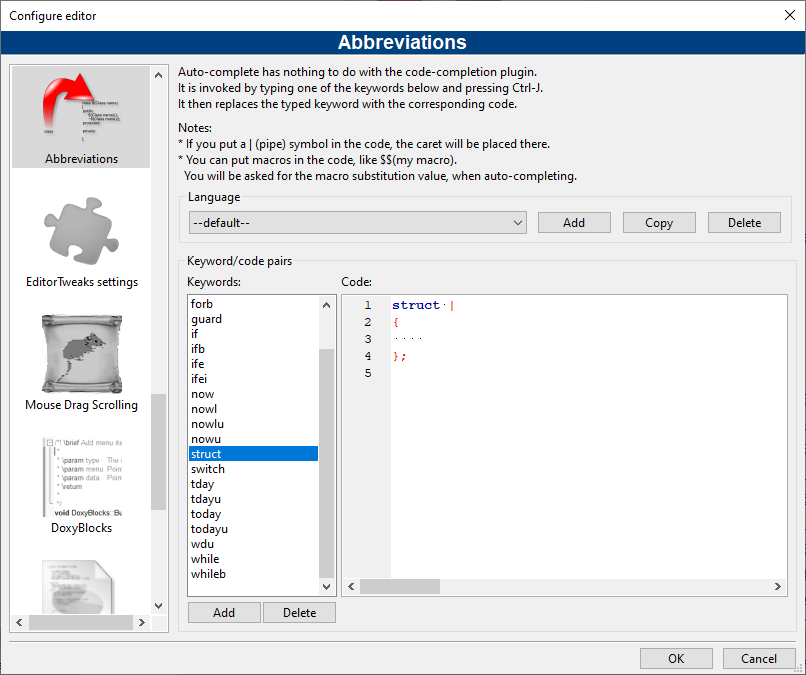CMAC (Cipher-based Message Authentication Code) is a MAC definedin NIST SP 800-38B and in RFC4493 (for AES only) andconstructed using a block cipher. It was originally known as OMAC1.
Code Blocks is an excellent programming option for C. It consists of an open source, multiplatform integrated development environment that supports using multiple compilers, among which are: GCC (MingW / GNU GCC), MSVC, Digital Mars, Borland C 5.5 and Open Watcom. The default compiler that this Code Blocks package comes with is MinGW. OpenPANA it'll be soon a full functional free solution which implements the PANA protocol. By now, it's a multithreading implementation, supported by a framework, which allows multiple users to authenticate.
The algorithm is sometimes named X-CMAC where X is the nameof the cipher (e.g. AES-CMAC).
This is an example showing how to generate an AES-CMAC tag:
And this is an example showing how to validate the AES-CMAC:
A cipher block size of 128 bits (like for AES) guarantees that the riskof MAC collisions remains negligible even when the same CMAC key isused to authenticate a large amount of data.
This implementation allows also usage of ciphers with a 64 bits block size(like TDES) for legacy purposes only.However, the risk is much higher and one CMAC key should be rotatedafter as little as 16 MB (in total) have been authenticated.
Crypto.Hash.CMAC.CMAC(key, msg, ciphermod, cipher_params, mac_len, update_after_digest)¶A CMAC hash object.Do not instantiate directly. Use the new() function.
| Variables: | digest_size (integer) – the size in bytes of the resulting MAC tag |
|---|
copy()¶Return a copy (“clone”) of the CMAC object.
The copy will have the same internal state as the original CMACobject.This can be used to efficiently compute the MAC tag of bytestrings that share a common initial substring.
| Returns: | An CMAC |
|---|
digest()¶Return the binary (non-printable) MAC tag of the messagethat has been authenticated so far.
| Returns: | The MAC tag, computed over the data processed so far.Binary form. |
|---|---|
| Return type: | byte string |

hexdigest()¶Return the printable MAC tag of the message authenticated so far.
| Returns: | The MAC tag, computed over the data processed so far.Hexadecimal encoded. |
|---|---|
| Return type: | string |
hexverify(hex_mac_tag)¶Return the printable MAC tag of the message authenticated so far.
| Returns: | The MAC tag, computed over the data processed so far.Hexadecimal encoded. |
|---|---|
| Return type: | string |
update(msg)¶Authenticate the next chunk of message.
| Parameters: | data (byte string/byte array/memoryview) – The next chunk of data |
|---|

verify(mac_tag)¶Install apache tomcat in debian server setup. Verify that a given binary MAC (computed by another party)is valid.
Code Blocks C++ Download For Mac
| Parameters: | mac_tag (byte string/byte array/memoryview) – the expected MAC of the message. |
|---|---|
| Raises: | ValueError – if the MAC does not match. It means that the messagehas been tampered with or that the MAC key is incorrect. |
Crypto.Hash.CMAC.new(key, msg=None, ciphermod=None, cipher_params=None, mac_len=None, update_after_digest=False)¶Create a new MAC object.
Code Blocks C++ Compiler Download

